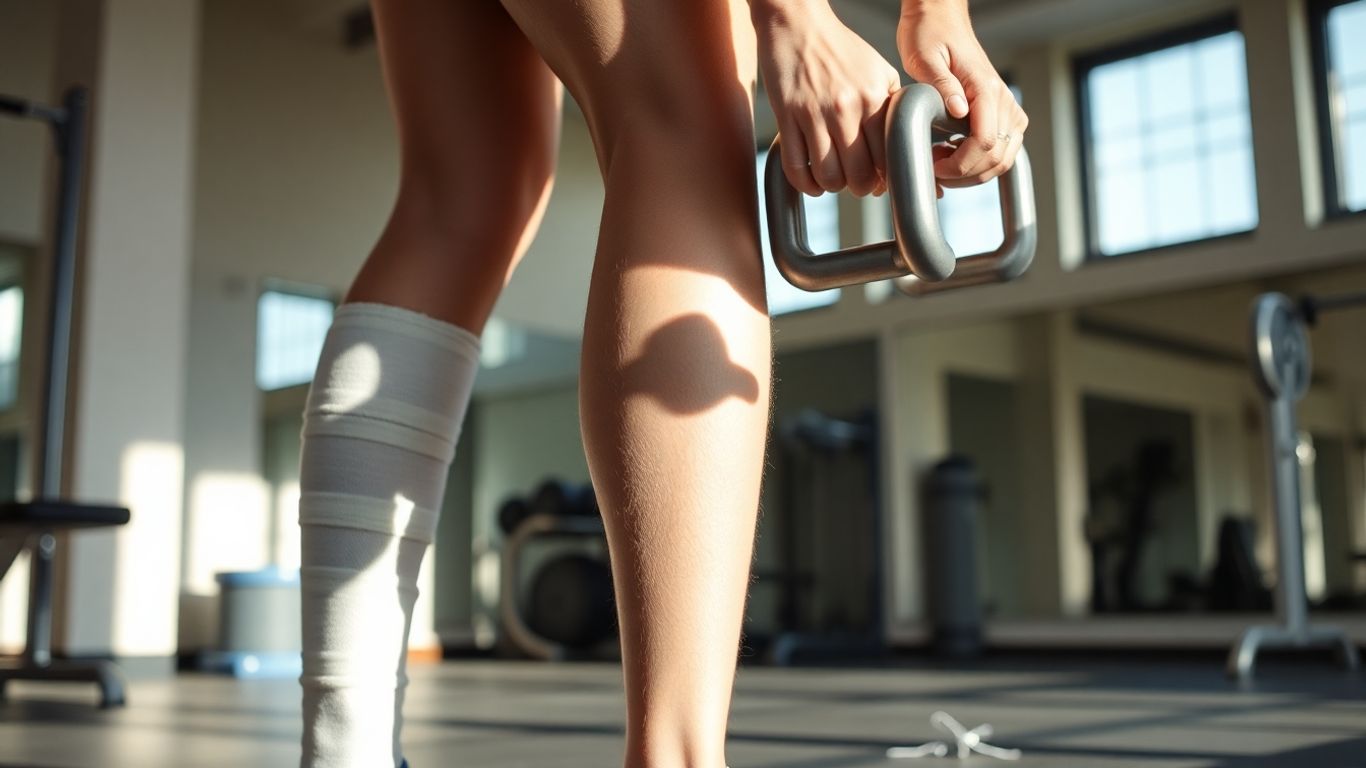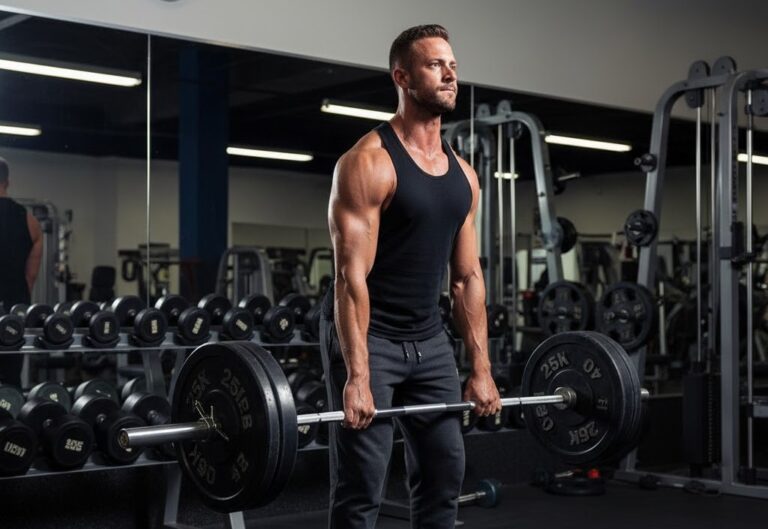Getting back on your feet after an injury can feel like a big challenge. You might be wondering how to start rebuilding your strength without pushing too hard. It’s a process, and taking it step by step is the best way to go. This guide will walk you through how to build strength gradually after recovering from injury, focusing on safe and effective methods to help you get back to your best.
Key Takeaways
- Start with gentle movements to wake up your muscles and improve flexibility after an injury.
- Slowly increase the intensity of your exercises to safely build muscle and avoid re-injury.
- Focus on strengthening your core muscles for better stability and balance during recovery.
- Combine different types of exercises, like resistance training and cardio, for a well-rounded recovery.
- Work with a physical therapist to get personalized advice and ensure you’re doing exercises correctly.
Understanding Your Recovery Journey
Initial Medical Evaluation and Diagnosis
Getting hurt is never fun, and figuring out what’s actually wrong is the first big step. Before you even think about lifting a weight or stretching too far, you really need to know what you’re dealing with. This means seeing a doctor or a specialist who can properly diagnose your injury. They’ll do tests, ask you questions about what happened, and give you a clear picture of the damage. Knowing the exact nature of your injury is the foundation for everything that follows. Without this, you’re just guessing, and that’s a fast track to making things worse.
Developing Your Personalized Rehabilitation Plan
Once you know what’s up, it’s time to make a plan. This isn’t a one-size-fits-all deal. Your recovery plan should be tailored specifically to you, your injury, and your body. It’s going to involve a mix of things, probably starting with rest and then moving into gentle movements. A good plan will also outline how to gradually increase the intensity of your exercises as you get stronger. Think of it like building a house; you need a solid blueprint before you start hammering nails. This plan is your blueprint for getting back to normal.
The Importance of Immediate Post-Injury Care
What you do right after the injury happens can make a big difference. While you’re waiting to see a doctor or getting that diagnosis, there are some basic steps you can take. These often involve RICE – Rest, Ice, Compression, and Elevation. This initial care helps manage pain and swelling, which can set the stage for a smoother recovery. It’s about being proactive and giving your body the best possible start. For more on how to handle the initial stages, check out this advice on safe recovery from injuries.
Taking care of yourself immediately after an injury isn’t just about feeling better in the short term; it’s about creating the best possible environment for your body to begin healing. This early attention can significantly impact the overall timeline and success of your rehabilitation.
Rebuilding Strength Safely and Effectively
Okay, so you’ve gotten past the initial shock and have a plan. Now comes the part where we actually start getting stronger. It’s not about jumping back into your old routine overnight, though. Think of it more like carefully adding layers, making sure each one is solid before you put on the next. The goal here is to rebuild muscle without causing more damage.
Gentle Movements to Start
When you’re first starting out, the focus is on getting things moving again. This means exercises that don’t put a lot of stress on the injured area. We’re talking about simple things like:
- Range-of-motion exercises: These help prevent stiffness and keep your joints from getting locked up. Think slow, controlled movements through a comfortable range.
- Light stretching: Gentle stretches can help improve flexibility and blood flow to the area.
- Isometric contractions: These are exercises where you tense a muscle without actually moving the joint. It helps wake up the muscle without stressing it.
It might not feel like much, but this is the groundwork. It’s about reminding your body how to move properly and safely.
Gradually Increasing Intensity
Once those gentle movements feel okay, it’s time to slowly ramp things up. This is where you start adding some resistance. The key word here is gradually. You don’t want to push too hard, too fast.
- Start with low resistance: This could be very light weights, resistance bands, or even just your own body weight.
- Focus on form: Doing the exercise correctly is way more important than how much weight you’re lifting. Bad form can lead to more injuries.
- Listen to your body: If something hurts, stop. There’s a difference between muscle fatigue and sharp pain.
Your physical therapist will help you figure out the right progression, maybe using a table like this to track your reps and weight:
| Exercise | Week 1 (Sets x Reps) | Week 2 (Sets x Reps) | Week 3 (Sets x Reps) |
|---|---|---|---|
| Bicep Curls | 2 x 10 | 2 x 12 | 3 x 10 |
| Squats (bodyweight) | 2 x 8 | 2 x 10 | 3 x 8 |
| Calf Raises | 3 x 15 | 3 x 15 | 3 x 18 |
Targeting Core Muscles for Stability
Your core muscles – that’s your abs, back, and hips – are like the foundation of your body. When they’re strong, everything else works better and you’re more stable. After an injury, these muscles can get weak, which affects your balance and can even make you more prone to other issues.
Strengthening your core isn’t just about doing crunches. It involves a variety of movements that stabilize your spine and pelvis, which is super important for safe movement and preventing future problems.
Exercises like planks, bird-dogs, and bridges are great for building this crucial support system. They might seem simple, but done correctly, they really work those deep stabilizing muscles.
Key Components of Strength Building
Alright, so you’re past the initial ouchy phase and ready to start actually getting stronger. That’s awesome! But where do you even begin? It’s not about hitting the gym like you used to, not yet anyway. We’re talking about smart, targeted moves that help your body heal and rebuild.
Effective Strength-Building Exercises
When we talk about getting stronger after an injury, it’s a bit like building a house. You need a solid foundation. That means starting with exercises that are gentle but effective. Think about movements that don’t put too much stress on the injured area but still get those muscles working. It’s all about waking them up and reminding them what to do.
Compound Movements for Overall Fitness
Once you’re feeling a bit more confident, we can start looking at exercises that work more than one muscle group at a time. These are called compound movements. Things like squats, lunges, or even modified push-ups (maybe on your knees to start) are great. They help build overall strength and get more bang for your buck, so to speak. These types of exercises are super efficient for rebuilding functional strength.
Conditioning Exercises for Flexibility
Strength isn’t just about lifting heavy things. It’s also about being able to move freely and without pain. That’s where conditioning exercises come in. These often focus on improving your flexibility and range of motion. Think gentle stretching, maybe some yoga poses, or even just controlled movements through a full range. This helps prevent stiffness and keeps your joints happy and healthy as you get stronger.
Enhancing Your Progress
So, you’ve been working hard, and things are starting to feel better. That’s awesome! Now, let’s talk about how to really boost your recovery and get back to feeling strong. It’s not just about doing the exercises; it’s about making sure you’re improving in all the right ways.
Improving Balance and Coordination
When you’ve been injured, your body’s natural ability to balance and coordinate might be a bit off. This is totally normal, but it’s something we can work on. Think about it – if your muscles aren’t firing quite right, your brain might not get the best signals about where your body is in space. We can start with simple things like standing on one leg, maybe holding onto something at first, and then gradually try to do it without support. You might also try walking heel-to-toe, like you’re walking on a tightrope. These exercises help retrain your brain and muscles to work together smoothly again. It’s all about rebuilding that connection.
Enhancing Joint Stability
Injuries can sometimes weaken the small muscles around your joints, which are super important for keeping everything stable. We want to make sure those little guys are strong so your joints don’t feel wobbly. Exercises that focus on controlled movements, especially through a full but pain-free range of motion, are great for this. Think about exercises that isolate the muscles around your knee or ankle, using light resistance bands or even just your own body weight. The goal here is to build up the support system for your joints, making them more resilient. Getting advice from a professional can really help tailor these to your specific needs, and you can find some great resources on optimizing your fitness.
Incorporating Cardiovascular Conditioning
Don’t forget about your heart and lungs! Getting your cardio back on track is a big part of feeling strong overall. It helps with blood flow, which is important for healing, and it just makes you feel more energetic. Start with activities that are low-impact, like swimming, cycling, or using an elliptical machine. As you get stronger, you can gradually increase the duration and intensity. It’s a good idea to chat with your doctor or physical therapist about what kind of cardio is best for you at different stages of your recovery. They can help you figure out a plan that works without putting too much stress on your healing body.
Remember, progress isn’t always a straight line. Some days will feel better than others, and that’s okay. The key is to keep showing up for yourself and celebrate the small wins along the way.
The Role of Professional Guidance
Consulting with a Physical Therapist
When you’re recovering from an injury, trying to figure out the best way to get back to normal can feel overwhelming. That’s where a physical therapist really shines. They’re trained to look at your specific injury and create a plan that’s just for you. They help you understand what’s going on and how to move forward safely. Think of them as your guide through the whole process. They’ll assess your situation, figure out what movements are okay and which ones to avoid, and then build a program to help you regain strength and flexibility. It’s not just about doing exercises; it’s about doing them the right way to avoid making things worse.
Understanding Modalities for Healing
Beyond just exercises, physical therapists often use different techniques, sometimes called modalities, to help with healing. These can include things like heat or cold therapy to manage swelling and pain, or electrical stimulation to help muscles work better. Sometimes they might use ultrasound. These aren’t magic cures, but they can be really helpful in making the exercise part of your recovery more comfortable and effective. It’s all about creating the best environment for your body to repair itself and get stronger.
Safe Exercise Instruction and Form
This is a big one. Doing exercises incorrectly can set you back, or even cause another injury. A physical therapist will show you exactly how to perform each movement, paying close attention to your form. They’ll correct you if you’re doing something wrong and explain why it matters. For example, when doing squats, they’ll make sure your knees track properly over your toes and that your back stays straight. This careful instruction is key to making sure the exercises are actually helping and not hurting. They might even use tools to help you feel the right muscles working.
Here’s a quick look at what a therapist might focus on:
- Range of Motion: Gentle movements to get your joints moving again without pain.
- Strength Building: Exercises using resistance bands, light weights, or your own body weight.
- Balance and Proprioception: Activities to help your body know where it is in space, which is often affected by injuries.
It’s important to remember that recovery isn’t a race. Working with a professional helps you pace yourself correctly, celebrating the small wins along the way and avoiding the temptation to push too hard too soon. They can help you get back to activities like recovering from a gym injury with confidence.
Maintaining Momentum and Preventing Setbacks
So, you’ve made some solid progress, which is awesome! But keeping that momentum going and avoiding a slip-up is just as important as the initial recovery. Think of it like keeping a plant alive – you can’t just water it once and expect it to thrive forever. It needs consistent care.
Consistency is Key for Progress
Sticking with your rehab plan, even when you start feeling better, is super important. Your muscles and tissues are still getting stronger, and consistency helps them adapt and build resilience. Skipping workouts or not doing your exercises properly can slow things down or even lead to a setback. It’s about showing up for yourself, day in and day out, even on days when you don’t feel like it. Small, regular efforts add up way more than occasional big pushes.
Nutrition and Lifestyle Adjustments
What you eat and how you live really impacts your body’s ability to heal and stay strong. Think about fueling your body with good stuff. Protein helps repair muscles, and getting enough vitamins and minerals supports overall healing. Staying hydrated is also a big one – it helps everything in your body work better. Plus, cutting back on things that can hinder recovery, like smoking or too much alcohol, makes a real difference. It’s not about drastic changes overnight, but making smart choices that support your body’s healing process.
Long-Term Maintenance for Lasting Health
Recovery doesn’t really end when you stop formal physical therapy. It’s more of a transition into a healthy lifestyle. This means keeping up with exercises that maintain your strength and flexibility. It also means being aware of how your body feels. If you start to notice any twinges or discomfort, don’t just ignore them. Address them early, maybe with a quick check-in with your therapist or by modifying your activities. Listening to your body is your best tool for preventing future injuries.
Here’s a quick rundown of what long-term maintenance might look like:
- Regular Movement: Incorporate a mix of strength, flexibility, and balance exercises into your weekly routine.
- Mindful Activity: Pay attention to your body during activities. If something feels off, adjust or rest.
- Healthy Habits: Continue with good nutrition, hydration, and adequate sleep.
- Periodic Check-ins: Consider occasional follow-ups with a physical therapist or doctor, especially if you’re starting a new, demanding activity.
To keep making progress and avoid slipping backward, it’s important to stay focused. Keep up the great work you’re doing! For more tips on staying on track, visit our website.
Wrapping Up Your Recovery Journey
So, there you have it! Rebuilding strength after an injury is definitely a marathon, not a sprint. It takes patience, listening to your body, and sticking with a plan. Remember to celebrate those small wins along the way – like being able to lift a little more weight or move a bit more freely. Keep up with your exercises, stay consistent, and don’t be afraid to ask for help if you need it. You’ve got this, and soon enough, you’ll be back to doing what you love, stronger than before.
Frequently Asked Questions
What’s the very first thing I should do after getting hurt?
Right after an injury, it’s super important to be careful. Try not to make the injury worse and give the hurt spot a break. Seeing a doctor quickly helps figure out what’s wrong and how to fix it best. Using ice can help with swelling and pain, and keeping the injured part raised can also reduce swelling.
How do I start getting stronger without hurting myself again?
Start slow with gentle movements that don’t cause pain. Think about simple stretches to keep things from getting stiff. As you feel better, you can slowly add exercises that challenge your muscles a bit more. It’s all about taking small, careful steps.
What are some good exercises to help me get stronger after an injury?
It’s great to do exercises that work many muscles at once, like squats or push-ups, but only when your body is ready. Also, focus on exercises that help your core muscles, which are important for keeping your body steady. Stretching is key too, to keep your joints moving well and prevent stiffness.
How does a physical therapist help with recovery?
A physical therapist is like a guide for your recovery. They can check how you’re doing and create a special plan just for you. They show you how to do exercises the right way to get the most benefit and avoid more injuries. They also use different methods, like heat or massage, to help you heal faster.
Is diet important when I’m recovering from an injury?
Yes, definitely! Eating well helps your body heal. Focus on foods with plenty of protein, vitamins, and minerals. Staying hydrated is also really important. Avoiding things like smoking can also make a big difference in how well and how quickly you get better.
How do I keep getting stronger and avoid getting hurt again?
The best way is to keep at it! Stick with your exercise plan, and don’t be afraid to slowly make it a little harder as you get stronger. Listen to your body, and if something hurts, back off a bit. Eating well and taking care of yourself overall also helps a lot in the long run.





